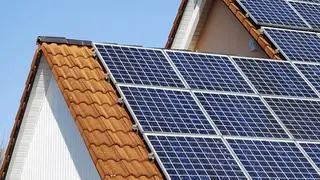Emerging economies (EMs) led by India are set to grow at a much faster pace in 2023 and 2024 even as the ongoing Ukraine war and raging inflation have dealt a severe blow to advanced economies (AEs).
According to IMF, emerging economies are projected to clock a growth of 3.9 per cent in 2023 and 4.2 per cent in 2024. But advanced economies are projected to grow at a much slower 1.3 per cent and 1.4 per cent in 2023 and 2024, with countries such as Germany slipping in to a technical recession this year.

The IMF has projected that global growth will bottom out at 2.8 per cent in 2023 before rising modestly to 3 per cent next year. The rise in central bank rates to fight inflation and Russia’s war in Ukraine continue to weigh on economic activity.
EMs to the fore
In April this year, the IMF cut its GDP growth forecast for India for the financial year 2023-24 by 20 basis points to 5.9 per cent. The latest growth forecast is considerably lower than the Reserve Bank of India’s projection of 6.5 per cent. In spite of the marked drop in growth projection, India continues to be the fastest growing economy in the world.


India’s neighbour and the second largest country in terms of GDP, China’s growth rate is projected to be 5.2 per cent in 2023 and 4.5 per cent in 2024. “China’s reopened economy is rebounding strongly,” Chief economist of IMF Pierre-Olivier Gourinchas said. Other emerging nations such as Indonesia and Malaysia too are expected to grow north of 4 per cent.
AEs lag
In sharp contrast, advanced economies are expected to see an especially pronounced growth slowdown, from 2.7 percent in 2022 to 1.3 percent in 2023, IMF has forecast in its World Economic Outlook. USA, the world’s biggest economy, is poised to grow at 1.6 per cent and 1.1 per cent for 2023 and 2024 respectively. Japan and Canada, too, are expected to grow below 2 per cent for 2023 and 2024. Other major advanced economies like France and Italy too are estimated to grow at a measly 0.7 per cent. Recently, New Zealand too slipped into recession after the country’s central bank aggressively raised interest rates to a 14-year high.
The biggest economies in Europe- Germany and UK, are the worst affected, with Germany having fallen into recession. The Eurozone slipped into recession in the first three months of the year. The bloc’s economy shrank as the rising cost of living weighed on consumer spending. The inflation rates too are particularly high for the German and British economies at 6.2 and 6.8 per cent.
Data show that, beginning 2020, the BRICS nations as a whole contribute more towards global GDP than the G7 industrialised nations do, in terms of purchasing power parity (PPP).








Comments
Comments have to be in English, and in full sentences. They cannot be abusive or personal. Please abide by our community guidelines for posting your comments.
We have migrated to a new commenting platform. If you are already a registered user of TheHindu Businessline and logged in, you may continue to engage with our articles. If you do not have an account please register and login to post comments. Users can access their older comments by logging into their accounts on Vuukle.